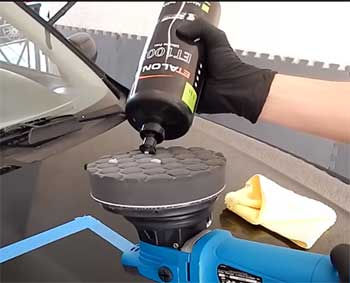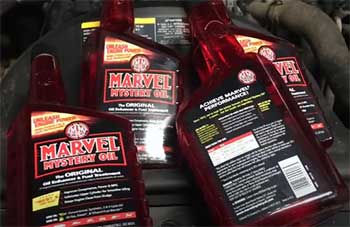When it comes to protecting your vehicle’s exterior, the conversation often revolves around two main contenders: PermaPlate and ceramic coating. Both have their unique features and advantages, but how do they stack up against each other?
Let’s deep dive into their world to see what they offer, and perhaps by the end, you’ll know which one is your vehicle’s best friend.
A Brief Comparison Table
| Factor | PermaPlate | Ceramic Coating |
| Formulation & Protection | Professional-grade product that forms a permanent bond with vehicle’s paint. Provides robust protection against environmental damage. | A liquid polymer that chemically bonds with factory paint. Primarily known for its water-repelling abilities. |
| Durability & Maintenance | Highly resistant to chipping, scratching, and fading. May reduce long-term maintenance costs. | Offers some level of protection against scratches. Longevity depends on product quality and application professionalism. |
| Aesthetic Appeal | Enhances the vehicle’s appeal, but its focus is more on protection and durability. | Gives a high-gloss finish, making your vehicle look brand new. |
| Cost & Application | Generally more expensive. Requires professional application. | Typically less expensive. Can be applied as a DIY project, but professional application is recommended for optimal results. |
The World of PermaPlate
PermaPlate is a professional-grade product designed to provide long-lasting protection for your vehicle. The coating works by forming a permanent bond with the car’s paint, creating a protective layer that guards against environmental damage.
- Pros of PermaPlate

The key advantage of PermaPlate is its environmental resilience.
It offers top-tier protection against harsh weather conditions, ultraviolet rays, and airborne contaminants.
This characteristic ensures your vehicle’s paint stays vibrant and shiny, enhancing its overall aesthetic appeal.
Moreover, PermaPlate is incredibly durable.
Once applied, it forms a protective barrier that resists chipping, scratching, and fading. So, you can rest easy knowing your vehicle is well-shielded from external damage.
- Cons of PermaPlate
While PermaPlate is a high-quality product, it’s not without its drawbacks. The primary disadvantage is that it’s often more expensive than its competitors. This increased cost might deter some vehicle owners from choosing it.
Additionally, application of PermaPlate requires a professional, which can add to the overall expense.
Also Read: Differences Between RestorFX And Ceramic Coating Paint Protection.
Ceramic Coating: A Tough Contender
Ceramic coating, on the other hand, is a liquid polymer applied by hand to the exterior of a vehicle. It chemically bonds with the vehicle’s factory paint, creating a layer of protection.
- Pros of Ceramic Coating
One of the most compelling reasons to opt for ceramic coating is its hydrophobic nature. This characteristic enables it to repel water, causing droplets to bead up and slide off, taking dirt and grime with them. This not only keeps your vehicle cleaner for longer but also makes it easier to wash.
Additionally, ceramic coating gives your car a high-gloss finish that is hard to beat, giving it a brand-new, showroom-quality look.
- Cons of Ceramic Coating

While ceramic coating offers many benefits, it does have a few cons.
For starters, it’s not completely immune to scratches and chips.
Despite offering some level of protection, it doesn’t completely shield your car from physical damage.
Secondly, the longevity of the ceramic coating largely depends on the quality of the product and the professionalism of the application.
Subpar application or a low-quality product could lead to uneven protection and short-lived results.
Key Differences Between PermaPlate and Ceramic Coating
PermaPlate and ceramic coatings are both popular choices when it comes to safeguarding your vehicle. However, they’re not identical twins but more like brothers, each with its personality and traits.
Let’s dig into their differences to understand what sets them apart.
- Formulation and Protection
PermaPlate is a professional-grade product that forms a permanent bond with your vehicle’s paint. This bond creates a durable layer that stands up robustly against harsh weather conditions, UV rays, and airborne contaminants.
In essence, PermaPlate is all about creating an environmental shield for your vehicle.
On the other hand, ceramic coating is a liquid polymer that bonds chemically with the vehicle’s factory paint. This protective layer does an excellent job of repelling water (thanks to its hydrophobic properties), which makes washing your vehicle easier and less frequent.
- Durability and Maintenance
PermaPlate is known for its impressive durability. Once applied, it can resist chipping, scratching, and fading, significantly prolonging the life of your car’s paint. This resilience can lead to a reduction in long-term maintenance costs.
Ceramic coating, while providing a level of protection against scratches, is not completely immune to physical damage. Its lifespan largely depends on the quality of the product used and the professionalism of the application.
In other words, if you’re choosing ceramic coating, you must pay attention to these details.
- Aesthetic Appeal
When it comes to creating a glossy, shiny finish, ceramic coating is the reigning champion. Its application results in a high-gloss finish that makes your vehicle look as if it’s just rolled off the showroom floor.
While PermaPlate also enhances the aesthetic appeal of your vehicle, its focus is more on durability and protection rather than a glossy finish.
- Cost and Application
PermaPlate typically comes with a higher price tag compared to ceramic coating. The application of PermaPlate also requires professional intervention, which can add to the total cost.
On the contrary, ceramic coating is typically less expensive and can even be a DIY project for car enthusiasts. However, for optimal results, a professional application is recommended.
Also Read: Is ResistAll Better Than Ceramic Coating?
Frequently Asked Questions (FAQ)
PermaPlate is a professional-grade coating designed to provide your vehicle with superior protection. It forms a permanent bond with the vehicle’s paint, protecting it from environmental damage and enhancing its durability.
Whether something is ‘better’ than ceramic coating largely depends on your specific needs and preferences. PermaPlate, for instance, offers superior durability and environmental protection but comes with a higher price tag. It’s crucial to evaluate your requirements before deciding on the best product for your vehicle.
Yes, you can wax a car with PermaPlate. Although the PermaPlate coating provides significant protection, adding a layer of wax can offer additional shine and an extra layer of protection against environmental elements.
While ceramic coating offers several benefits, it’s not entirely immune to scratches and chips. Also, its effectiveness heavily relies on the quality of the product and the professionalism of the application. A poorly applied coating or subpar product could lead to inconsistent protection and short-term results.
Final Thoughts
Deciding between PermaPlate and ceramic coating depends on your specific needs, budget, and the level of protection you desire for your vehicle. Both provide solid defense against environmental elements, but with different strengths and weaknesses.
By understanding their pros and cons, you’re now well-equipped to make an informed decision and give your vehicle the protection it deserves.

